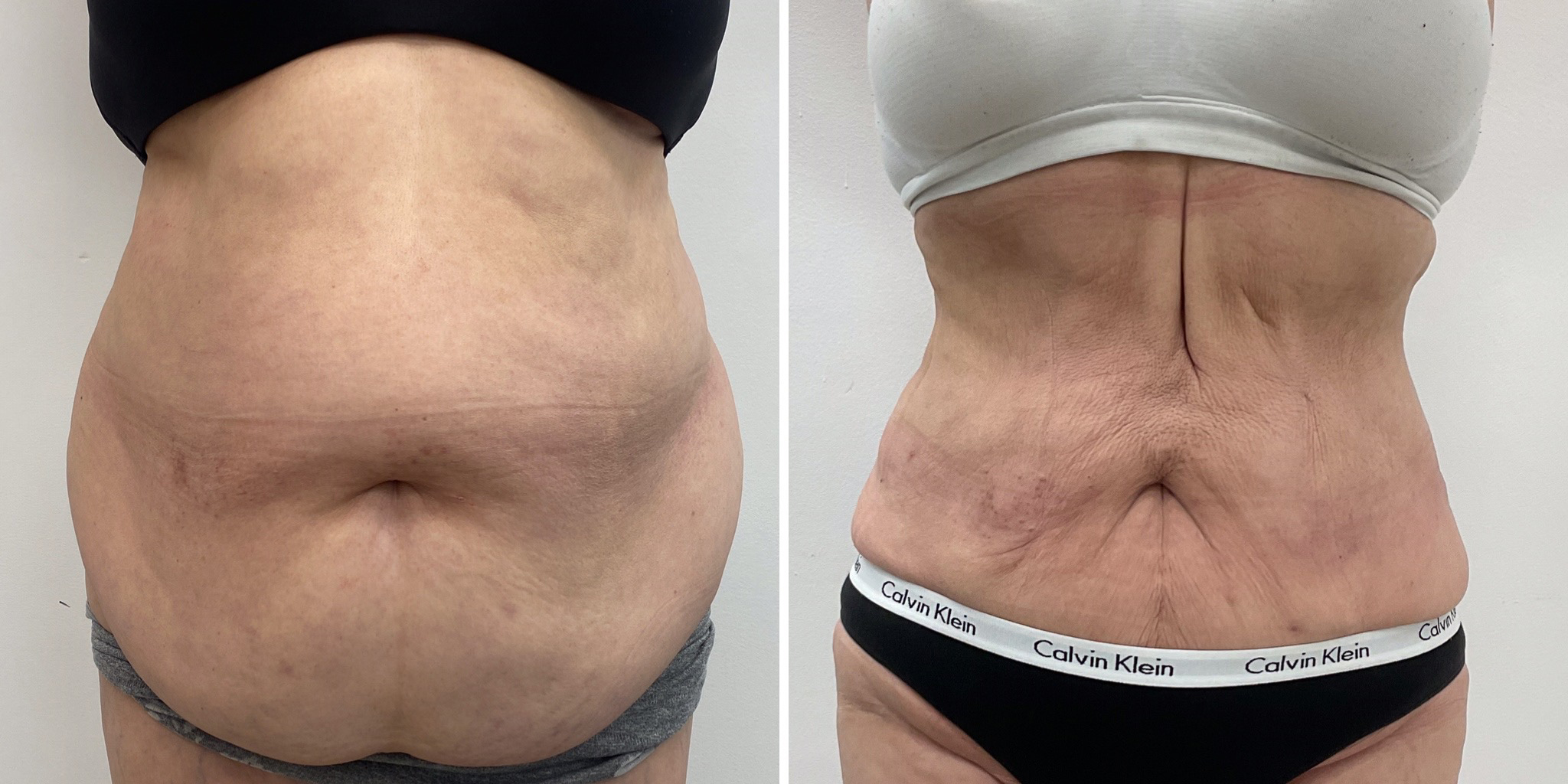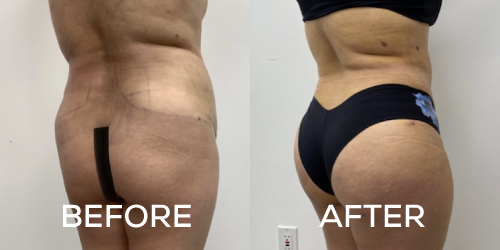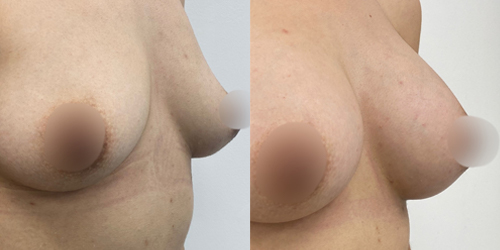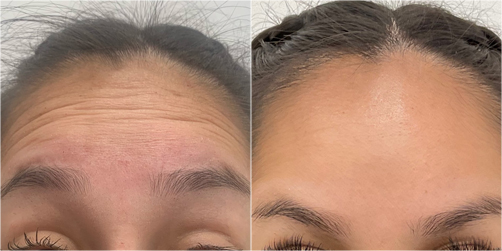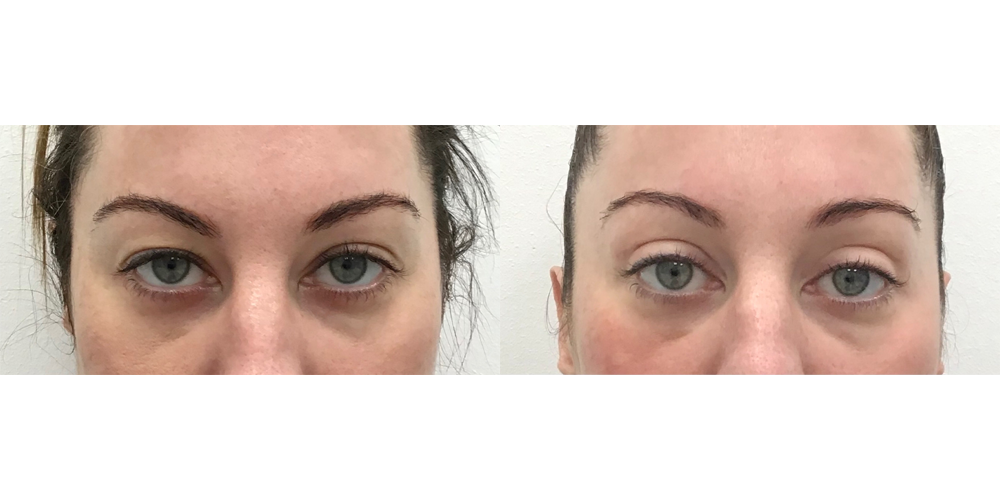Intimate Lightening
Consultations offered at our two convenient locations in Alhambra and Santa Ana

Intimate lightening is a growing trend in the field of cosmetic procedures that involves lightening the skin in intimate areas such as the external genitalia and anal area, areolas, underarms, and bikini line. This procedure aims to address concerns related to hyperpigmentation, dark spots, and uneven skin tone in these regions. By matching these areas with the skin tone of the rest of the body, you can feel more comfortable in intimate moments. You may also feel much more confident with a wide variety of clothing, like a bikini or a top that reveals your underarms.
SkinZone Laser & Cosmetic Surgery offers PRX Intima Perfexion, a specially formulated intimate lightening cream that only requires 1 in-office appointment to get long-lasting results. As an offshoot product of the PRX Derm Perfexion- a skin revitalization treatment that produces the same results as a chemical peel without skin peeling side effects- Intima Perfexion is safe and effective for more sensitive areas.
If you feel that Intima Perfexion may be right for you, please consider an appointment with Dr. Hannah Vu, our skilled and knowledgeable board-certified plastic and reconstructive surgeon. Get started today by calling our Alhambra, CA location at (626) 329-4555 or our office in Santa Ana, CA at (714) 361-1555. Alternatively, you can ask us a question or request your consultation online, and a skin care professional will get back to your inquiry as soon as possible.
Contents
About Intimate Skin Discoloration
Although skin concerns like hyperpigmented spots, melasma, rosacea, and many other skin conditions are caused by or worsened by excessive UV rays from the sun, intimate areas aren’t exposed in the same manner. Discoloration, particularly darkening of these areas can be caused by many different issues:
- Hormonal fluctuations and pregnancy. Increased rates of hyperpigmentation of the face, abdomen, areolas, and perineum have been observed in both pregnant and women taking oral contraceptives. A type of melasma called catamenial hyperpigmentation often changes as a result of hormonal changes related to menstruation. This is due to increased estrogen receptors present within the dermis and epidermis of the skin which are particularly sensitive to female hormone changes. (1) Some women who have already gone through the process of pregnancy and childbirth still have pigmentation issues that never go away without a cosmetic treatment.
- Diabetes and hormone disorders. Another skin condition that shows up as region darkening of the skin, acanthosis nigricans, is often a sign of a more serious medical condition present, like insulin resistance, obesity, or a hormone disorder. (2) Once the root cause is treated, however, the skin should return to normal over time. Some patients have residual darkening in intimate areas, leading them to look for an answer that allows them to feel like their most attractive self.
- Medications. Medications can cause drug-induced hyperpigmentation that may or may not go away with the cessation of the drug; many researchers believe that there are several factors at play. They may directly contribute to both the excess accumulation of melanin, or skin pigment, in the skin, or they may trigger an inflammatory response that induces hyperpigmentation. (3)
- Friction and shaving. Intimate areas are not exposed to many environmental factors, but they are often shaved, waxed, and vulnerable to the effects of depilatory creams designed to improve aesthetics. Over time, these practices can cause post-inflammatory hyperpigmentation– a natural response to consistent injury or irritation. In the same manner, friction from tight-fitting clothes, sexual activity, and skin rubbing against itself can further stimulate more melanin production.
- Genetics. Sometimes, genetics are to blame for the development of a number of various hyperpigmentation syndromes. The most common are vascular birthmarks like macular stains, port-wine stains, hemangiomas and pigmented moles and marks.
About PRX Intima Perfexion
PRX Intima Perfexion contains 3 main ingredients: hydrogen peroxide, trichloroacetic acid (TCA), and kojic acid. Hydrogen peroxide is often used for hair lightening purposes and as a skin cleanser/disinfectant. Trichloroacetic acid (TCA), is a common chemical often implemented in facial peels for the reduction of fine lines, sun damage, atrophic scars, and hyperpigmentation. Kojic acid has been utilized as a natural replacement for lightening hydroquinone cream. Though it is a whitening agent, it also contains antimicrobial properties and can act as a UV protection agent. (4) This unique formulation comes with a wide range of benefits for patients:
- It is safe for all skin types on the Fitzpatrick scale.
- The treatment only takes 15 to 20 minutes to complete.
- There is no anesthesia, pain, or downtime involved.
- It will not cause skin peeling.
- The product is safe for male and female external genitalia.
It is safe for application in these areas:
- Mons Pubis
- Bikini Line
- Labia Majora
- Penis and Scrotum
- Areolas
- External Perianal Area
- Underarms
Can You Apply Intima Perfexion On Other Areas of the Body?
Intima Perfexion is specially designed to be effective for intimate areas that often experience more friction and sensitivity than other parts of the body, and it has only been tested for use in previously listed areas. If you are looking for a more comprehensive treatment that also treats sun damage, enlarged pores, atrophic scars, mild sagging, and other signs of aging, PRX Derm Perfexion may be the solution for you. In addition to all of the above capabilities, it also treats skin discoloration in a similar fashion to PRX Intima Perfexion.
Candidates for Intimate Lightening
Ideal candidates for intimate lightening are in good overall health with no underlying conditions or well-managed conditions. For example, those with hyperpigmentation related to diabetes should achieve optimal blood sugar levels prior to considering PRX Intima Perfexion. Patients who have ever experienced a viral outbreak in the treatment area should consult Dr. Vu about taking an antiviral medication in order to prevent an outbreak. All in all, Intima Perfexion is suitable for all skin types and sensitivities and can provide skin lightening effects safely.
Personal Consultation

During your first appointment with Dr. Vu, she will take the time necessary to thoroughly review your medical history, history of your hyperpigmentation treatment, and closely examine the characteristics of your skin. She will listen intently to your concerns and let you know, in detail, what to expect from the PRX Intima Perfexion treatment. If you are considering intimate lightening or have concerns about discoloration in your private areas, schedule a consultation with Dr. Vu at SkinZone Laser & Cosmetic Surgery. Contact us at (626) 329-4555 (Alhambra) or (714) 361-1555 (Santa Ana) to take the first step towards a more confident and radiant you. We also have an online contact form available for your convenience.
Procedure Steps
Prior to applying PRX Intima Perfexion, Dr. Vu will first cleanse the area with a specialized solution and apply a thin coat of moisturizing cream to the area. After patting the area dry, she will load one syringe full of Intima Perfexion and administer it topically. Using a spatula, she will spread the medication evenly throughout and repeat the application if necessary. After, she will dampen a cotton pad with water and clean up any residual and use another one to dry the area. To finish the procedure, she will apply the moisturizer again and give you instructions for application of the at-home topical serum. When applying the PRX Intima Perfexion product at home, you should take care to follow these instructions:
- Use nitrile gloves, not latex
- Apply at least 24 hours after shaving or waxing
- Avoid areas affected by dermatitis
- Avoid application on the inguinal folds
Recovery and Results
Intima Perfexion does not require any downtime and you can resume your activities as usual with some exceptions. You will most likely feel some slight tingling after application, but if you feel stinging or irritation, you should rinse well with water. In the following weeks, you should keep the treatment area away from sun exposure since UV rays can stimulate unwanted melanin production. If the area is exposed to the sun, apply a sunscreen with an SPF of at least 30 or more and reapply as the directions state. Frequent lightening should be avoided, and sessions should be spaced at least 4 to 8 weeks apart to prevent redness, swelling, and other side effects.
Cost of Intimate Lightening in Santa Ana, CA
At SkinZone Laser & Cosmetic Surgery, we are committed to transparency and ensuring that you have a comprehensive understanding of the costs associated with your intimate lightening treatment. While we cannot provide an exact price here, as it depends on your individual circumstances, we encourage you to contact us at (626) 329-4555 to reach our Alhambra location or (714) 361-1555 to get in touch with our Santa Ana location. We also have a convenient contact page where you can let us know more about you and seek out a consultation.
FAQ
How many sessions of PRX Intima Perfexion do I need?
Many patients benefit from 3 to 5 sessions, but it mostly depends on the extent of your hyperpigmentation.
Can PRX Intima Perfexion be applied on the labia?
The product is suitable for the labia majora, but it should not be applied internally or on the labia minora.
When will I see the results of PRX Intima Perfexion?
You will likely see results a couple of hours after your session, but you must wait at least 1 month before undergoing another session to further enhance the results.
References
- Mobasher P, Foulad DP, Raffi J, et al. Catamenial Hyperpigmentation: A Review. The Journal of clinical and aesthetic dermatology. 2020;13(6):18-21. https://www.ncbi.nlm.nih.gov/pmc/articles/PMC7442313/
- Brady MF, Prashanth Rawla. Acanthosis Nigricans. Nih.gov. Published April 6, 2019. https://www.ncbi.nlm.nih.gov/books/NBK431057/
- Hassan S, Zhou X. Drug Induced Pigmentation. PubMed. Published 2021. https://www.ncbi.nlm.nih.gov/books/NBK542253/
- Saeedi M, Eslamifar M, Khezri K. Kojic acid applications in cosmetic and pharmaceutical preparations. Biomedicine & Pharmacotherapy. 2019;110:582-593. doi:https://doi.org/10.1016/j.biopha.2018.12.006





